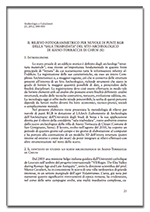 A. ARRIGHETTI, M. CAVALIERI. 2012. Il rilievo fotogrammetrico per nuvole di punti RGB della « sala triabsidata » del sito archeologico di Aiano-Torraccia di Chiusi (SI). Archeologia e calcolatori 23, p. 21-33 (in italiano).
A. ARRIGHETTI, M. CAVALIERI. 2012. Il rilievo fotogrammetrico per nuvole di punti RGB della « sala triabsidata » del sito archeologico di Aiano-Torraccia di Chiusi (SI). Archeologia e calcolatori 23, p. 21-33 (in italiano).
PDF : ART-AC-18-2012
Reconstructing the development of architectural complexes throughout time is often very diffcult. Buildings are usually a series of constructive actions, changes from the original project, and also collapses and reconstructions due to human actions (such as demolitions) and/or natural (earthquakes, foods, etc.). The building’s structure records all these events, giving us the chance to understand and decode them through the relief. The archaeological relief is thus supposed to offer a complete and rapid documentation. At the same time, it must be enriched with all the information needed for a deeper analysis of the archaeological object itself. In the last years, the introduction and continuous improvements of many instruments (e.g. laser scanners and photogrammetric technologies) have led to a sensible qualitative and quantitative change in the recording of the material structure.
In particular, the possibility to combine different relief technologies – obtaining high resolution, 3D geometrically correct models of buildings or of entire archaeological sites (which could be further investigated thanks to archaeological analysis or other procedures), has modified the archaeological approach towards the material “datum” and its divulgation. In order to achieve a better knowledge of nowadays technologies, the divulgation of different employed methodologies – through their application in research contexts – is the best way of transmission and comparison. This contribution is dedicated to the presentation and detailed analysis of a photogrammetric RGB point-clouds technology, used for the relief of a living-room during the archaeological excavation at Aiano-Torraccia di Chiusi (City of San Gimignano).


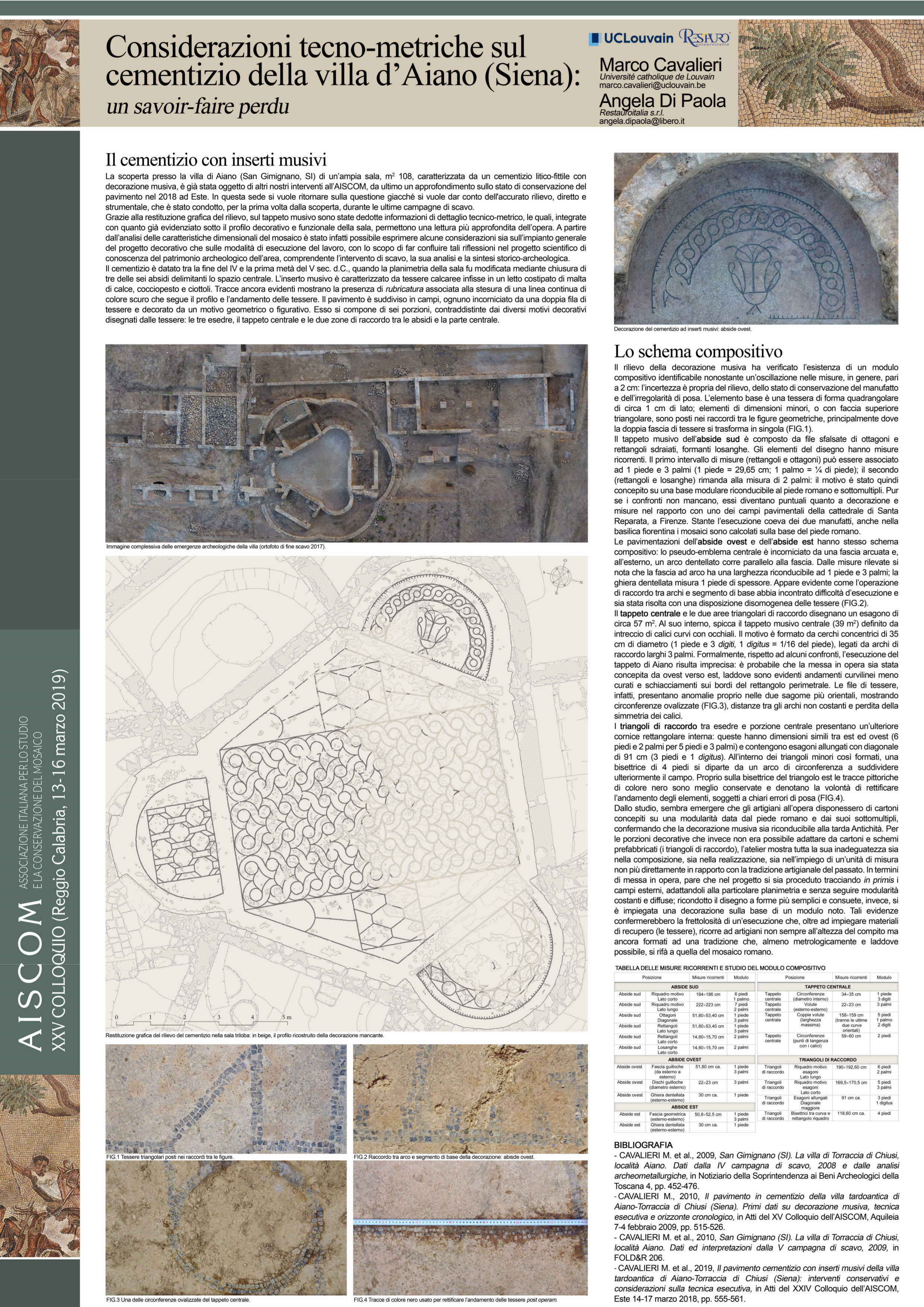
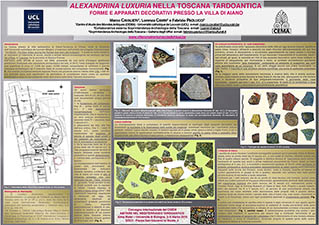 Alexandrina luxuria nella Toscana tardoantica. Forme e apparati decorativi presso la villa di Aiano
Alexandrina luxuria nella Toscana tardoantica. Forme e apparati decorativi presso la villa di Aiano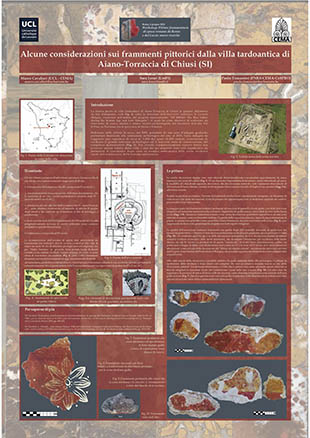 M. Cavalieri, S. Lenzi, P. Tomassini, Alcune considerazioni sui frammenti pittorici dalla villa tardoantica di Aiano-Torraccia di Chiusi
M. Cavalieri, S. Lenzi, P. Tomassini, Alcune considerazioni sui frammenti pittorici dalla villa tardoantica di Aiano-Torraccia di Chiusi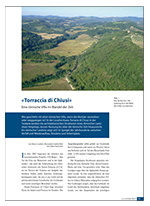 M. Cavalieri, A. Giumlia-Mair, J. Hamacher, Torraccia di Chiusi» Eine römische Villa im Wandel der Zeit, Antike Welt 3, 2011, p. 39-45 (en allemand).
M. Cavalieri, A. Giumlia-Mair, J. Hamacher, Torraccia di Chiusi» Eine römische Villa im Wandel der Zeit, Antike Welt 3, 2011, p. 39-45 (en allemand).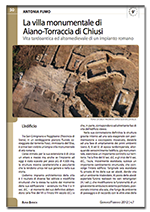 A. Fumo, La villa monumentale di Aiano-Torraccia di Chiusi. Villa tardoantica ed altomedievale di un impianto romano, Runa Bianca 7, janvier-février 2012, p. 50-53 (en italien).
A. Fumo, La villa monumentale di Aiano-Torraccia di Chiusi. Villa tardoantica ed altomedievale di un impianto romano, Runa Bianca 7, janvier-février 2012, p. 50-53 (en italien).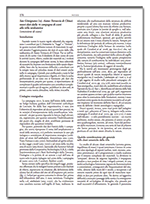 M. Cavalieri et alii, San Gimignano (SI). Aiano-Torraccia di Chiusi: nuovi dati dalla VI campagna di scavi alla villa tardoantica, NSBAT 6, 2011, p. 376-379.
M. Cavalieri et alii, San Gimignano (SI). Aiano-Torraccia di Chiusi: nuovi dati dalla VI campagna di scavi alla villa tardoantica, NSBAT 6, 2011, p. 376-379.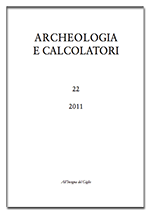 M. CAVALIERI, G. PACE. 2011. Metodologie geofisiche a confronto presso la villa tardoantica di Aiano-Torraccia di Chiusi (Siena) : qualche nota su efficacia e limiti. Archeologia e calcolatori 22, p. 283-306 (in italiano).
M. CAVALIERI, G. PACE. 2011. Metodologie geofisiche a confronto presso la villa tardoantica di Aiano-Torraccia di Chiusi (Siena) : qualche nota su efficacia e limiti. Archeologia e calcolatori 22, p. 283-306 (in italiano). A. ARRIGHETTI, M. CAVALIERI. 2012. Il rilievo fotogrammetrico per nuvole di punti RGB della « sala triabsidata » del sito archeologico di Aiano-Torraccia di Chiusi (SI). Archeologia e calcolatori 23, p. 21-33 (in italiano).
A. ARRIGHETTI, M. CAVALIERI. 2012. Il rilievo fotogrammetrico per nuvole di punti RGB della « sala triabsidata » del sito archeologico di Aiano-Torraccia di Chiusi (SI). Archeologia e calcolatori 23, p. 21-33 (in italiano).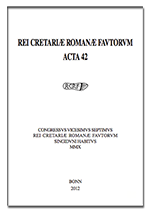 M. Cavalieri, E. Boldrini, C. Bossu, P. De Idonè & A. Fumo, Aspetti della cultura materiale nelle fasi di riutilizzo (V–inizi VII sec. d.C.) della villa romana di Aiano-Torraccia di Chiusi (San Gimignano, Siena/Italy). Note preliminari dans REI CRETARIÆ ROMANÆ FAVTORVM ACTA 42, Bonn 2012, p. 169-180.
M. Cavalieri, E. Boldrini, C. Bossu, P. De Idonè & A. Fumo, Aspetti della cultura materiale nelle fasi di riutilizzo (V–inizi VII sec. d.C.) della villa romana di Aiano-Torraccia di Chiusi (San Gimignano, Siena/Italy). Note preliminari dans REI CRETARIÆ ROMANÆ FAVTORVM ACTA 42, Bonn 2012, p. 169-180.